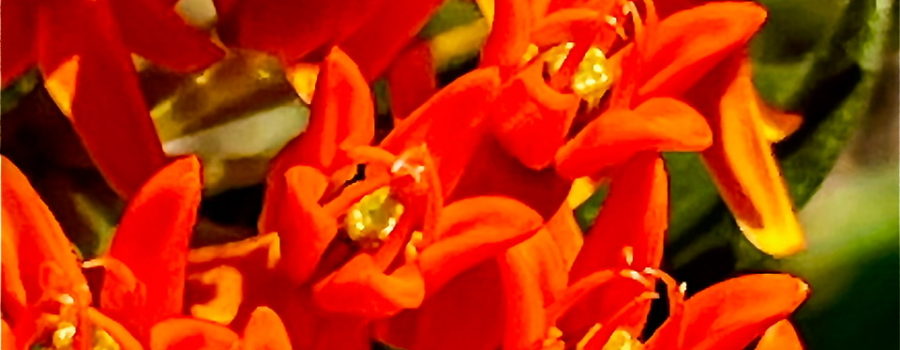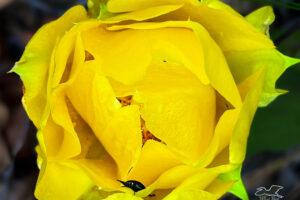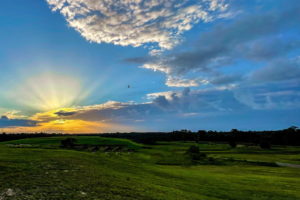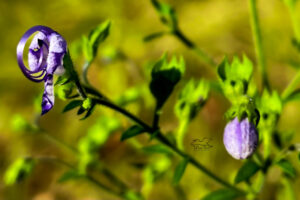Butterfly Weed is an Unusual, Useful Type of Milkweed

One afternoon as I drove home from the office, I caught a quick glimpse of bright orange in the green along the roadside. Curiosity got the better of me, so I went back slowly and discovered the source of the beautiful color. It was a couple of stems of butterfly weed (Asciepias tuberosa), also known as Canada root, chigger flower, Indian paintbrush, Indian posy, fluxroot, butterfly love, butterfly milkweed, and orange milkweed. It was in the middle of the right of way, near someone’s mail box, and at first I thought somebody had planted it. The county mows the right of way in that area, so it’s unusual to see flowers growing. But when I looked to the edge of the woods, I realized that there was more growing there. Butterfly weed has a large taproot that helps it to expand (among other things), and I suspect that these stems were offshoots of the plant at the woods edge. It will probably get mowed down the next time they mow, but until then it’s a nice little splash of color.

Butterfly weed is a member of the milkweed family (Apocynaceae) that as it’s name suggests, attracts butterflies, bees, wasps, and hummingbirds due to it’s bright color and abundance of nectar. There are two subspecies of butterfly weed in Florida. They are A. tuberosa rolfsii, which occurs statewide (and is what this one is) and A. tuberosa tuberosa, which is only found in northern Florida. There are also several other subspecies which can be found as far north as northern Canada and throughout the southwestern United States to California. Unlike most milkweeds, butterfly weed does not have the thick milky sap that this family is famous for. Instead, butterfly weed sap is transparent and watery, but it can still cause skin irritation in people who are sensitive to it. It is also highly toxic to many types of animals including horses, dogs, cats, and people when eaten. Fortunately, it has a bitter taste and most animals won’t eat it unless very hungry.

Like so many other toxic plants, butterfly weed does have it’s medicinal uses. It is most commonly known as a treatment for pleurisy, and is sometimes called pleurisy root since native Americans used to chew the root as a treatment. The early pioneers also used to boil the root to use as a treatment for diarrhea as well as other types of respiratory ailments. The young seed pods and leaves also used to be boiled in several changes of water and used as food. Now it can be found in a processed extract or as a dried root powder. As well as having medicinal uses, butterfly weed is often used decoratively in gardens and especially in butterfly gardens. It is both deer and rabbit resistant, so it can be a good choice in rural areas. If you’re not lucky enough to live in an area where it grows wild, seeds can be bought through many commercial nurseries. If harvesting wild plants, don’t try to transplant it, but instead gather seeds and plant them in the fall for spring germination. They should be planted in areas of full sunlight and preferably in dry, sandy soil.

I have seen butterfly weed growing in clearings in the woods up here in the sandhills quite often. Because of it’s potential toxicity I have never planted it on my property, but I can understand why many people would. Once again, we are very fortunate here in central Florida to have in the wild what many people have to go to a nursery and buy. It never stops amazing me what a wonderful place this really is!






Recent Comments